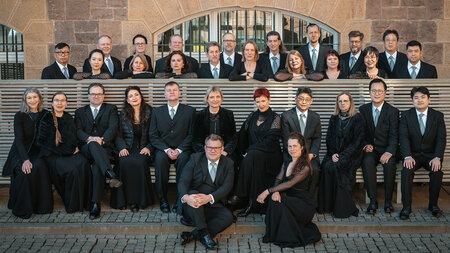Eintrag in der Universitätsbibliographie der TU Chemnitz
Volltext zugänglich unter
URN: urn:nbn:de:bsz:ch1-qucosa-212501
You, Tiangui
Schmidt, Oliver (Prof. Dr.) ; Ou, Xin (Prof. Dr.) ; Schmidt, Heidemarie (PD Dr.) (Gutachter)
Resistive switching in BiFeO3-based thin films and reconfigurable logic applications
Kurzfassung in englisch
The downscaling of transistors is assumed to come to an end within the next years, and the semiconductor nonvolatile memories are facing the same physical downscaling challenge. Therefore, it is necessary to consider new computing paradigms and new memory concepts. Resistive switching devices (also referred to as memristive switches) are two-terminal passive device, which offer a nonvolatile switching behavior by applying short bias pulses. They have been considered as one of the most promising candidates for next generation memory and nonvolatile logic applications. They provide the possibility to carry out the information processing and storage simultaneously using the same resistive switching device.This dissertation focuses on the fabrication and characterization of BiFeO3 (BFO)-based metal-insulator-metal (MIM) devices in order to exploit the potential applications in nonvolatile memory and nonvolatile reconfigurable logics. Electroforming-free bipolar resistive switching was observed in MIM structures with BFO single layer thin film. The resistive switching mechanism is understood by a model of a tunable bottom Schottky barrier. The oxygen vacancies act as the mobile donors which can be redistributed under the writing bias to change the bottom Schottky barrier height and consequently change the resistance of the MIM structures. The Ti atoms diffusing from the bottom electrode act as the fixed donors which can effectively trap and release oxygen vacancies and consequently stabilize the resistive switching characteristics. The resistive switching behavior can be engineered by Ti implantation of the bottom electrodes.
MIM structures with BiFeO3/Ti:BiFeO3 (BFO/BFTO) bilayer thin films show nonvolatile resistive switching behavior in both positive and negative bias range without electroforming process. The resistance state of BFO/BFTO bilayer structures depends not only on the writing bias, but also on the polarity of reading bias. For reconfigurable logic applications, the polarity of the reading bias can be used as an additional logic variable, which makes it feasible to program and store all 16 Boolean logic functions simultaneously into the same single cell of BFO/BFTO bilayer MIM structure in three logic cycles.
| Universität: | Technische Universität Chemnitz | |
| Institut: | Professur Materialsysteme der Nanoelektronik | |
| Fakultät: | Fakultät für Elektrotechnik und Informationstechnik | |
| Dokumentart: | Dissertation | |
| Betreuer: | Schmidt, Oliver (Prof. Dr.) ; Schmidt, Heidemarie (PD Dr.) | |
| URL/URN: | http://nbn-resolving.de/urn:nbn:de:bsz:ch1-qucosa-212501 | |
| SWD-Schlagwörter: | Resistives Schalten , Metall-Halbleiter-Kontakt , Donator <Halbleiterphysik> | |
| Freie Schlagwörter (Deutsch): | bipolares Widerstandsschalten , BiFeO3 , veränderliche Schottky-Barriere , beweglichen Donatoren , feste Donatoren , Ti-Implantation , nichtflüchtige Widerstandsspeicher , rekonfigurierbare und nichtflüchtige Logikanwendungen | |
| Freie Schlagwörter (Englisch): | bipolar resistive switching , BiFeO3 , tunable Schottky barrier , mobile donors , fixed donors , Ti-implantation , nonvolatile memory , reconfigurable nonvolatile logics | |
| DDC-Sachgruppe: | Angewandte Physik, Elektrizität, Elektronik | |
| Tag der mündlichen Prüfung | 25.10.2016 |




